Photo
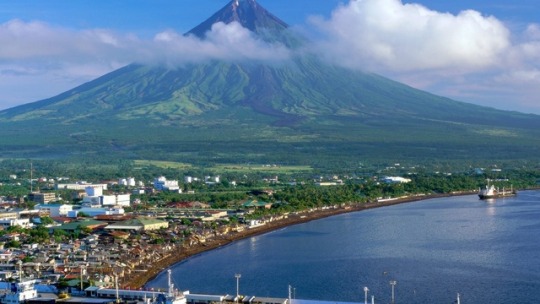
From Mayon Volcano with its near perfect cone to white, golden and black sand beaches, waterfalls and caves, Spanish period churches and ancestral houses, Albay is home to scenic spots and majestic structures.
The province is a complete destination for travelers who are after leisure, adventure, and new experiences.
Mayon Volcano
No other volcano in the world has a cone as perfectly shaped as Mayon. Towering at almost 8,000 feet above sea level, it lies at the center of the three cities and 15 municipalities of Albay. Mayon’s name was derived from the local word “Magayon,” which means beautiful.
The volcano is one of the most active in the Philippines. There have been 49 eruptions since the first documented activity in 1616, with the worst explosion occurring on February 1, 1814 and killing some 1,200 people in Cagsawa and Budiao.
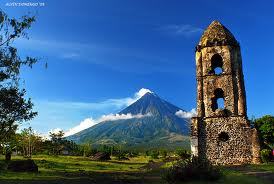
Cagsawa Ruins
One of the ways to enjoy the majestic view of Mayon is from the Cagsawa Ruins.
The belfry and the fallen church walls are prominent features of the Cagsawa Ruins, a park dedicated to the memory of the thriving town that was destroyed by Mayon Volcano’s eruption in 1814. (Photo courtesy of the Albay Provincial Government)
The Cagsawa Park is a memorial to the townspeople of Cagsawa who perished during the eruption of February 1, 1814. It is one place where Mayon Volcano appears to be a perfect cone. The bell tower of the destroyed Church of Cagsawa, with Mayon in the background, is probably one of the most photographed man-made structure in the country.
Within the park are kiosks selling souvenirs, from woodcraft to potteries to indigenous wear to local delicacies. Nearby, there are restaurants and eateries, ice cream and halo-halo parlors, and even a resort with a swimming pool.
Getting to Cagsawa Ruins:
– Ride a jeepney heading to Daraga marked with any of the following: Malabog, Guinobatan, Camalig. Tell the driver to let you off at Cagsawa Ruins.
– If you’re bringing your own transport, just drive west of Legazpi City and follow the road markings that will lead you to the park.
0 notes
Photo

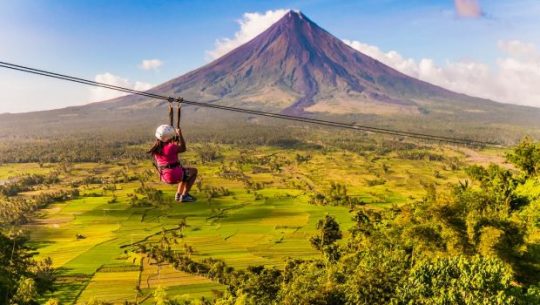
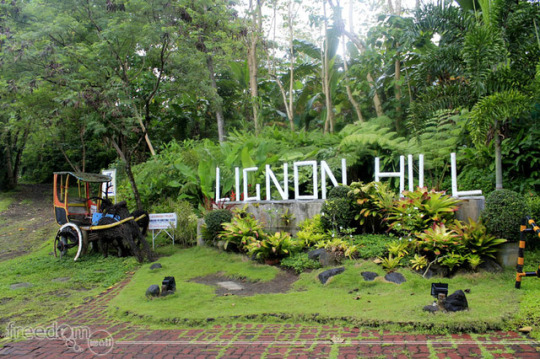
Ligñon Hill Nature Park
Viewing deck at Ligñon Hill Nature Park in Legazpi City. (Photo courtesy of the Albay Provincial Government)
A long and winding road leads up to a circular viewing deck constructed on top of a hill in Legazpi City. Ligñon Hill provides a vantage view of scenic Legazpi City, Albay Gulf, and Mayon Volcano.
Aside from sightseeing, Ligñon Hill offers enjoyable to challenging pursuits for all types of visitors.
Guests can choose from several adventure and extreme sports activities, including a zipline ride, rapelling, biking on gullies at the foot of Mt. Mayon, ATV rides, trail climb, and tunnel exploration.
At the concrete pavilion close to the viewing deck, visitors may enjoy the view, take their snacks, buy local products, or view art and photo exhibits by local artists.
Operating hours: 8 a.m.-11 p.m.
Joggers are free of charge from 5 a.m.-9 a.m.
Entrance fees: P10 (educational tour participants), P20 (non-Albay residents and foreigners)
Getting to Ligñon Hill:
– From the Legazpi City Airport: Turn right to Magayon Drive (you will pass through a private subdivision) and then turn left at the junction with Bogtong Road. Continue until you reach the tennis courts, just before the gate to the Albay Wildlife Park. You may start your trek up the hill at the entrance (near the tennis courts). You can also drive your vehicle up the hill.
– From Legazpi Port: A Legazpi-Daraga Loop 1 jeepney will take you directly to the foot of the hill.
– From Daraga: Take a tricycle from the centro to Tagas and ask the drive to drop you off at the tennis courts.
0 notes
Photo
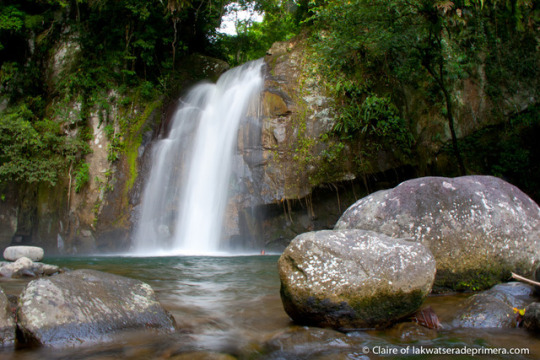
Vera Falls
One of Albay’s top attractions is Vera Falls in Malinao.
A little over an hour away from Legazpi City is a delightful curtain of falling water called Vera Falls. It is set amidst a backdrop of diverse flora and fauna within the richly forested Mt. Malinao. The cascades of water located at the bottom of a ravine in Barangay Bulang drop 25 meters into a crystal clear blue lagoon.
Getting to Vera Falls
-From Legazpi City: Drive to Tabaco City, turn left after the church, and continue on towards Barangay Comun when you reach the Malinao Rehabilitation Center in Barangay Quinastillohan.
-From Ligao, drive along Sabluyon road until you reach Malinao Rehabilitation Center in Barangay Quinastillohan and proceed towards Barangay Comun.
Enter the Comun road, turn left and continue driving past the bridge, eroded parts, and some rough portions until you reach a basketball court. Turn left here and proceed up to the wide parking lot, after which you will continue on foot to Vera Falls.
The falls are about 8 kilometers from Tabaco City, an hour and a half drive from Legazpi City and about 45 minutes drive from Ligao City via Sabloyon Road.
0 notes
Photo
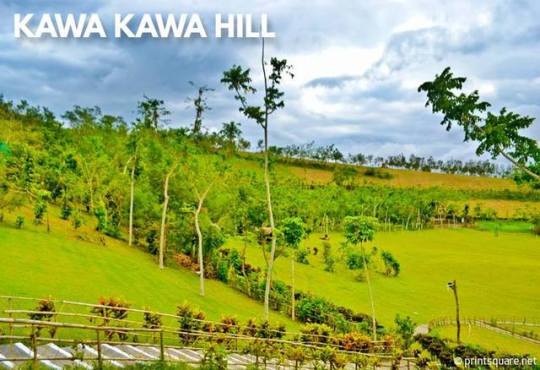
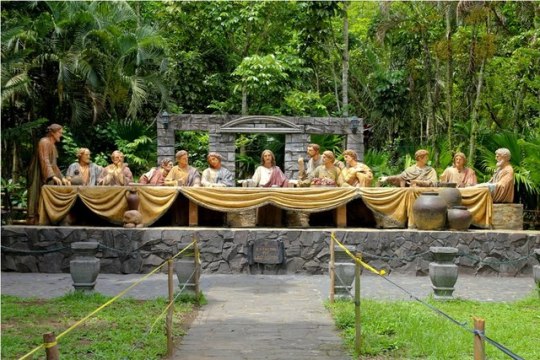
Kawa-Kawa Hill
Larger than life sculpted rendition of The Last Supper at the foot of Kawa-Kawa Hill in Ligao City, Albay. This scene is a prelude to the 14 Stations of the Cross arranged up and around the hill.
Unlike any other hill, Kawa-Kawa has a concave or cratered top instead of a convex or rounded one. It got its name from this curious shape that resembles a “kawa” or cauldron.
Its unique crater summit, which spans six hectares, has been likened to an amphitheater. This is why Kawa-Kawa is also often referred to as “the hill without a hilltop.”
This hill in California Village, Barangay Tuburan, Ligao is 236 meters high. From the topmost part of Kawa-Kawa, visitors have a clear view of the whole of Ligao and neighboring towns as well as sprawling green fields and nearby Mt. Masaraga and Mt. Mayon.
Kawa-Kawa is also a popular pilgrim site because of the larger than life statues depicting the 14 Stations of the Cross decorating the last 500 meters to the crater and all around its 836-meter rim.
One of the activities at Kawa-Kawa is horseback riding. The Philippine Eagles Scout Advancement Camp and Facilities and a volleyball court can also be found in the area.
The hill slopes are planted with dinorado (high-quality mountain rice), pineapple and vegetables to promote agriculture and environmental awareness.
Getting to Kawa-Kawa Hill
Kawa Kawa Hill is two kilometers away from Ligao’s city center. Ligao is 27 kilometers away from the Provincial Capitol of Albay and approximately 30 kilometers from Legazpi City. Vans and jeepneys regularly serve the Legazpi-Ligao route. You can find these vans and jeepneys at the Legazpi Grand Central Terminal.
0 notes
Photo
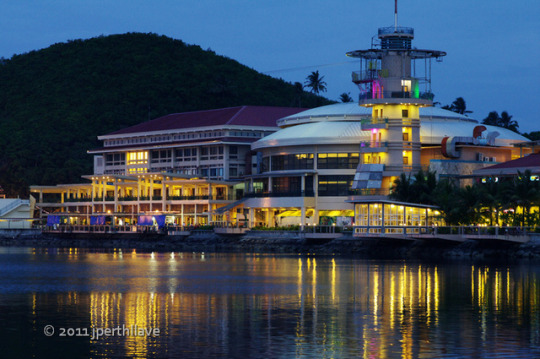
Embarcadero de Legazpi
Legazpi Port, Victory Village, Legazpi City
Contact numbers: (052) 820-2360 | (052) 480-3357 | (0915) 760-6244
A shot of the Embarcadero de Legazpi, a premier waterfront lifestyle hub along the harbor, taken at night. (Photo courtesy of the Albay Provincial Government)
Located in Victory Village, Embarcadero de Legazpi is a premier waterfront lifestyle hub along the harbor in Legazpi City.
Open from 10 a.m. to midnight, the mall gives local and foreign tourists an array of lifestyle options — from dining and shopping to entertainment.
A 105-square meter event center called the Celebration Plaza serves as venue for conventions, fashion shows, beauty pageants, competitions, and other gatherings.
Other exciting offerings of Embarcadero: 90-feet high skywalk with a view of Albay Gulf, cityscape, and world-famous Mayon Volcano; 59-feet Climbing Wall and a Bungee Trampoline and a trampoline chair; 350-meter zipline from a lighthouse; kart race and Segway rides; water activities like parasailing, jetski, paddle boat and water jeep.
Also found at Embarcadero are a marine-themed hotel called Ellis Ecotel and Suncore Diagnostic Clinic and the Excelsior Spa.
Getting to Embarcadero
The Embarcadero is a short distance from the Legazpi Airport. There are tricycles or taxis that can bring you there directly from the airport. Within the city, take a jeepney with a Legazpi or Legazpi City route that goes directly to the boulevard entrance.
0 notes
Photo
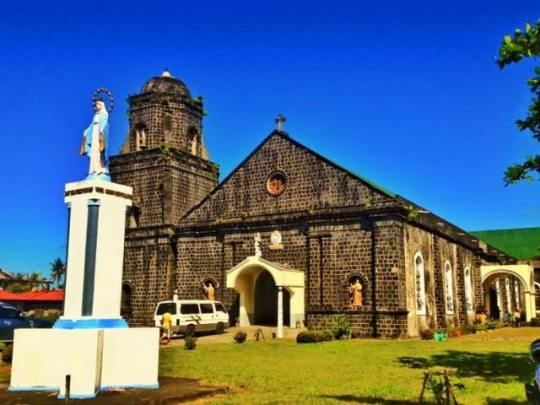
Joroan Church
This small church in Tiwi is home to the miraculous image of the Nuestra Señora de Salvacion. Every third Saturday of August, thousands of pilgrims flock to Joroan Church to pay homage to the patroness of the Province of Albay (Diocese of Legazpi).
The pilgrim church of the Nuestra Señora de Salvacion in Joroan, Tiwi, Albay. (Photo courtesy of the Albay Provincial Government)
During the feast of Our Lady of Salvation, also known as Our Lady of Light, pilgrims from different parts of the country participate in a maritime processions and a concelebrated mass on the shores of Sogod Beach.
Getting to Joroan Church
By private transport: Tiwi is a 45-minute drive from Legazpi City. Upon reaching the town center, head north for about two kilometers to reach the turn for Joroan. Just follow the direction of the marker and drive another five kilometers on a paved road to reach your destination.
By public transport: Vans for hire leave for Tiwi from the terminal in Legazpi City. Ask to be dropped off at the town center or at the final stop. Take a jeepney and get off at Joroan crossing. You know it’s the correct stop when you see the San Isidro Labrador chapel. From there, it’s a short tricycle ride to the Joroan Church.
0 notes
Photo

Lake Danao
The world’s smallest commercially available fish make their home in Danao Lake, Polangui. (Photo courtesy of the Albay Provincial Government)
The world’s smallest commercially available fish (Pandaca Pygmea) makes this mountaintop lake in Barangay Danao, Polangui its home. The rare tabios or sinarapan, which is one of Bicol’s indigenous delicacies, is usually cooked wrapped in banana leaves and steamed or in coconut milk. Anglers as big as eels as well as other kinds of fresh water species can also be found here.
Danao Lake is located 500 meters above sea level and about 20 kilometers away from the town center. It is surrounded by lush and verdant vegetation where animals graze freely, usually when rice-planting season is over.
Getting to Danao Lake
The town of Polangui, where Danao Lake is situated, is around 40 kilometers from the Albay capital of Legazpi City. Vans bound for Polangui park at the Legazpi Grand Central Terminal. There are also jeepneys that ply the Legazpi to Polangui route.
Located at barangay Danao, Polangui, Albay with a land elevation of about 500 meters above sea level and with a distance of about 20 km. from the town.
Lake Danao is still about 20 kilometers from the town of Polangui and involves a 30-minute hike through carabao trails and abaca plantations. It is best visited with a local guide in tow.
0 notes
Photo
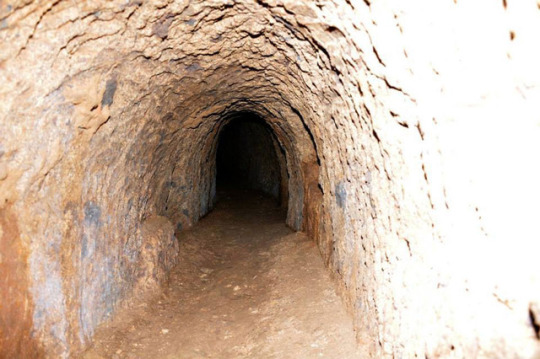
Japanese Tunnels
A small part of a network of subway passages constructed by Japanese soldiers in Mt. Kitwinan, Camalig, Albay. (Photo courtesy of the Albay Provincial Government)
This network of subway passages constructed by Japanese soldiers in Camalig, Albay served as their pathway to the different parts of the province and refuge from American bombings.
The tunnels can be found beneath Mount Quitwinan (oftentimes spelled as Kitwinan), which provides a vantage view of Mayon Volcano and Legazpi City.
Mount Quitwinan occupies part of the village of Tinago, Ilawod, Gotob, Mina, Gapo and Sumlang in Camalig and even a portion of the adjacent municipality of Daraga.
Getting to the tunnels
The town of Camalig is about 15 kilometers from Legazpi City. Jeepneys from Legazpi that are bound for towns in the third district of Albay, including Guinobatan, Ligao City, Polangui, Libon, Oas, Pio Duran, pass by the Camalig town center.
The tunnels are accessible via the access road going to Mt. Kitwinan. Visitors should pass by the Camalig tourism office for more information about exploring these tunnels.
0 notes
Photo

Misibis Bay Resort and Casino
Misibis Bay
Cagraray Island, 4509 Bacacay, Albay
Contact details: (632) 661-8888, [email protected]
Misibis Bay is a 5-hectare high-end resort along the southern tip of Cagraray Island in Bacacay, Albay. The island resort may be reached through a scenic travel by land (45 minutes), by helicopter ride (15 minutes), or fast watercraft (30 minutes) from the Embarcadero in Legazpi City.
Accommodation facilities range from rooms to suites to villas, and amenities and facilities include a spa, fitness center, pool, activity center, as well as restaurants and bars.
Water activities at Misibis Bay include kayaking, banana boat rides, wind surfing, hobie cat sailing, paddle surfing, jet skiing, diving, and sunset cruise. On land, visitors can explore the resort grounds using the Segway, go on a scenic ride around the island aboard a dune buggy, make their way to the Eco-Energy Park on an ATV, or zip their way across a 200-meter or a 450-meter line from the Eco-Energy Park.
0 notes
Photo
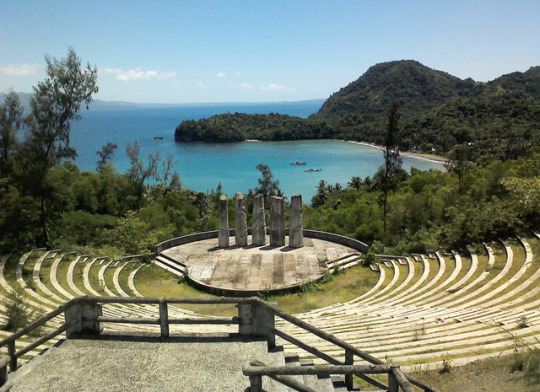
Cagraray EcoPark
This amphitheater is one of Cagraray EcoPark attractions. (Photo courtesy of the Albay Provincial Government)
The Cagraray EcoPark is a nature camp on Cagraray Island, which is connected to mainland Albay by the Sula Bridge.
It offers adventure activities such was wall climbing and zipline rides.
A signature spot within the park is the amphitheater, which is built just near the entrance to the park. Other noteworthy structures are the chapel, hanging bridge, and solar-powered lampposts.
Getting to Cagraray EcoPark
– Take the Tabaco-Tiwi Road from Legazpi City. Take the turn-off to San Isidro Road and continue on towards Sto. Domingo Church. Turn right after the Sto. Domingo Municipal Hall, and then turn left. You know you’re in the right track if you pass by the barangays of Calayucay, Salvacion and Buhatan and reach Sula Bridge.
– You can also reach the Eco-Energy Park via the motorized boat that makes a regular trip (one a half hour) from the port of Legazpi City.
0 notes
Photo
It’s important to be a good guest wherever you’re going, be it another country, another state, or just another city. Below are travel etiquette tips for you to follow.
1. Learn About the Place You’re Going
Not every country has the same business culture, so it’s a good idea to brush up on the place you’ll be visiting.
For example: In countries like Turkey, a firm handshake is considered rude. In China, you should greet the oldest people first, and bow slightly.
2. Learn the Language, at Least a Little
Even though English has become the “common tongue” of the international business world, your hosts will still appreciate you making an effort to learn a little bit of their language.
Dropping in a simple “Hello” or “Thank you” or “It was nice meeting you” will go a long way if it’s in a language familiar to your hosts.
And no one’s suggesting you immerse yourself in a language course. Smartphone apps like Google Translate can be your best friend on a business trip.
3. But Be Careful With the Language
“Ich Bin ein Berliner.” That’s John F. Kennedy saying “I am a Berliner” in Germany in 1963.
Urban legend holds that this was Kennedy misspeaking, and that people in Berlin assumed he meant “I am a jelly doughnut.” The confusion existed because a “Berliner” is a type of doughnut made in Berlin.
The business etiquette lesson remains: If you’re traveling abroad, make sure you know what you’re saying.
4. Get There Early
If you can arrive a day or two earlier, try to do so. This is one of the travel etiquette tips that will give you a chance to know more about the place and the people you’re visiting.
Talk to the concierge at your hotel about hiring a guide — one who speaks your language — who can show you around.
5. Keep Things Professional
There’s a difference between traveling and being on vacation. A work trip might be more relaxed than regular work, but only to a point.
Research your host country, if traveling abroad, to find out what’s appropriate professional conduct.
6. Learn How to Greet People
There is the handshake example above, of course. But it’s also wise to know the right way to address someone.
In China, for example, it’s customary to address business people by their title and family name.
7. Learn the Geography
Just as your hosts might appreciate you knowing how to speak a little of their language, they’ll also like knowing that you know where things are.
If you’re in Brazil, for example, it would help to know that Brasilia is the capital, and Sao Paolo is the largest city.
8. Remember the Time
Understanding time zones isn’t all that’s important here — although you’ll need to remember that too, of course. However, it’s also important to understand the way time can mean different things in different cultures.
If someone in Japan says a meeting starts at 9 a.m., it starts at 9 a.m. In other countries, punctuality isn’t as prized, so don’t take offense if not everyone shows up at the agreed upon time.
9. Praise, Don’t Criticize, the Food
It’s like what your mom always said: If you don’t have anything nice to say, don’t say anything at all. If their food seems strange, be polite.
It’s a good idea to brush up on the cuisine and dining customs before you go.
10. Praise, Don’t Criticize, the Country
Think of this as an addendum to rule number 7. Don’t mention what you don’t like or you found disappointing.
If their government has made the news for a negative reason, wait for your hosts to bring that up before weighing in on the subject.
11. Be Careful With Social Media
This is an extension of the previous two tips. You don’t want to say anything bad about your hosts, and you don’t want to post anything negative either.
And you might be in a country where Facebook and Twitter are banned, so show some respect and wait until you’re home to post about your trip.
12. Be Curious
If your hosts start to tell you about the place you’re visiting, pay attention. This is one of the travel etiquette tips that’s simply good manners, and good business. The more you know about your host country, the more comfortable you’ll be conversing with people later on in your visit.
Small talk can lead to bigger things.
13. Keep the Conversation Light
At the same time, remember that some things might be off limits in certain countries.
In England, for example, it might be considered inappropriate to talk about someone’s life outside work. Keep things light: weather, food, current events.
14. Dress Up
While “business casual” might mean different things in different countries, it’s better to err on the side of caution and dress in a way that’s conservative yet comfortable.
It’s like your teachers used to say on class trips: You’re representing the place you come from.
15. Watch Your Hands
Handshakes aren’t the only things that vary from place to place. Hand gestures are the same way.
For example: Giving someone a “thumbs up” in Latin America is considered rude. It means “up yours,” not “good job.”
16. Remember the Folks Back Home
If you have kids, they might ask you “Did you bring me anything?” when you get back home.
Your co-workers won’t ask the same question, but it’s still nice to think about them. They might be a little jealous you got to visit, say, Australia in the middle of a brutal East Coast winter.
So bring something back for them.
17. And Remember Your Hosts
You’ve just spent a week in a foreign country with people who not only agreed to do business with you, but also helped guide you through an unfamiliar culture.
It won’t hurt to send them a thank you card or small gift for their help. A gesture like that can go a long way the next time you travel on business.
Adios for now — and enjoy your trip!
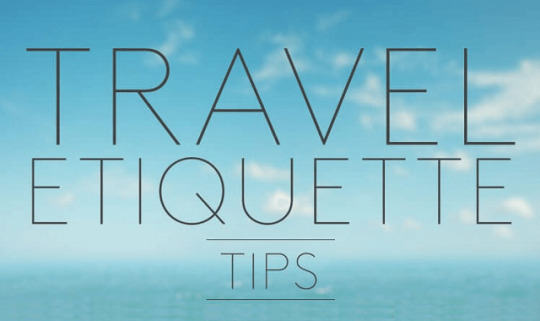
2 notes
·
View notes
Photo
It’s important to be a good guest wherever you’re going, be it another country, another state, or just another city. Below are travel etiquette tips for you to follow.
1. Learn About the Place You’re Going
Not every country has the same business culture, so it’s a good idea to brush up on the place you’ll be visiting.
For example: In countries like Turkey, a firm handshake is considered rude. In China, you should greet the oldest people first, and bow slightly.
2. Learn the Language, at Least a Little
Even though English has become the “common tongue” of the international business world, your hosts will still appreciate you making an effort to learn a little bit of their language.
Dropping in a simple “Hello” or “Thank you” or “It was nice meeting you” will go a long way if it’s in a language familiar to your hosts.
And no one’s suggesting you immerse yourself in a language course. Smartphone apps like Google Translate can be your best friend on a business trip.
3. But Be Careful With the Language
“Ich Bin ein Berliner.” That’s John F. Kennedy saying “I am a Berliner” in Germany in 1963.
Urban legend holds that this was Kennedy misspeaking, and that people in Berlin assumed he meant “I am a jelly doughnut.” The confusion existed because a “Berliner” is a type of doughnut made in Berlin.
The business etiquette lesson remains: If you’re traveling abroad, make sure you know what you’re saying.
4. Get There Early
If you can arrive a day or two earlier, try to do so. This is one of the travel etiquette tips that will give you a chance to know more about the place and the people you’re visiting.
Talk to the concierge at your hotel about hiring a guide — one who speaks your language — who can show you around.
5. Keep Things Professional
There’s a difference between traveling and being on vacation. A work trip might be more relaxed than regular work, but only to a point.
Research your host country, if traveling abroad, to find out what’s appropriate professional conduct.
6. Learn How to Greet People
There is the handshake example above, of course. But it’s also wise to know the right way to address someone.
In China, for example, it’s customary to address business people by their title and family name.
7. Learn the Geography
Just as your hosts might appreciate you knowing how to speak a little of their language, they’ll also like knowing that you know where things are.
If you’re in Brazil, for example, it would help to know that Brasilia is the capital, and Sao Paolo is the largest city.
8. Remember the Time
Understanding time zones isn’t all that’s important here — although you’ll need to remember that too, of course. However, it’s also important to understand the way time can mean different things in different cultures.
If someone in Japan says a meeting starts at 9 a.m., it starts at 9 a.m. In other countries, punctuality isn’t as prized, so don’t take offense if not everyone shows up at the agreed upon time.
9. Praise, Don’t Criticize, the Food
It’s like what your mom always said: If you don’t have anything nice to say, don’t say anything at all. If their food seems strange, be polite.
It’s a good idea to brush up on the cuisine and dining customs before you go.
10. Praise, Don’t Criticize, the Country
Think of this as an addendum to rule number 7. Don’t mention what you don’t like or you found disappointing.
If their government has made the news for a negative reason, wait for your hosts to bring that up before weighing in on the subject.
11. Be Careful With Social Media
This is an extension of the previous two tips. You don’t want to say anything bad about your hosts, and you don’t want to post anything negative either.
And you might be in a country where Facebook and Twitter are banned, so show some respect and wait until you’re home to post about your trip.
12. Be Curious
If your hosts start to tell you about the place you’re visiting, pay attention. This is one of the travel etiquette tips that’s simply good manners, and good business. The more you know about your host country, the more comfortable you’ll be conversing with people later on in your visit.
Small talk can lead to bigger things.
13. Keep the Conversation Light
At the same time, remember that some things might be off limits in certain countries.
In England, for example, it might be considered inappropriate to talk about someone’s life outside work. Keep things light: weather, food, current events.
14. Dress Up
While “business casual” might mean different things in different countries, it’s better to err on the side of caution and dress in a way that’s conservative yet comfortable.
It’s like your teachers used to say on class trips: You’re representing the place you come from.
15. Watch Your Hands
Handshakes aren’t the only things that vary from place to place. Hand gestures are the same way.
For example: Giving someone a “thumbs up” in Latin America is considered rude. It means “up yours,” not “good job.”
16. Remember the Folks Back Home
If you have kids, they might ask you “Did you bring me anything?” when you get back home.
Your co-workers won’t ask the same question, but it’s still nice to think about them. They might be a little jealous you got to visit, say, Australia in the middle of a brutal East Coast winter.
So bring something back for them.
17. And Remember Your Hosts
You’ve just spent a week in a foreign country with people who not only agreed to do business with you, but also helped guide you through an unfamiliar culture.
It won’t hurt to send them a thank you card or small gift for their help. A gesture like that can go a long way the next time you travel on business.
And speaking of traveling on business — here you’ll find 25 ways to save money on business travel.
Adios for now — and enjoy your trip!

2 notes
·
View notes
Photo

It’s important to be a good guest wherever you’re going, be it another country, another state, or just another city. Below are travel etiquette tips for you to follow.
1. Learn About the Place You’re Going
Not every country has the same business culture, so it’s a good idea to brush up on the place you’ll be visiting.
For example: In countries like Turkey, a firm handshake is considered rude. In China, you should greet the oldest people first, and bow slightly.
2. Learn the Language, at Least a Little
Even though English has become the “common tongue” of the international business world, your hosts will still appreciate you making an effort to learn a little bit of their language.
Dropping in a simple “Hello” or “Thank you” or “It was nice meeting you” will go a long way if it’s in a language familiar to your hosts.
And no one’s suggesting you immerse yourself in a language course. Smartphone apps like Google Translate can be your best friend on a business trip.
3. But Be Careful With the Language
“Ich Bin ein Berliner.” That’s John F. Kennedy saying “I am a Berliner” in Germany in 1963.
Urban legend holds that this was Kennedy misspeaking, and that people in Berlin assumed he meant “I am a jelly doughnut.” The confusion existed because a “Berliner” is a type of doughnut made in Berlin.
The business etiquette lesson remains: If you’re traveling abroad, make sure you know what you’re saying.
4. Get There Early
If you can arrive a day or two earlier, try to do so. This is one of the travel etiquette tips that will give you a chance to know more about the place and the people you’re visiting.
Talk to the concierge at your hotel about hiring a guide — one who speaks your language — who can show you around.
5. Keep Things Professional
There’s a difference between traveling and being on vacation. A work trip might be more relaxed than regular work, but only to a point.
Research your host country, if traveling abroad, to find out what’s appropriate professional conduct.
6. Learn How to Greet People
There is the handshake example above, of course. But it’s also wise to know the right way to address someone.
In China, for example, it’s customary to address business people by their title and family name.
7. Learn the Geography
Just as your hosts might appreciate you knowing how to speak a little of their language, they’ll also like knowing that you know where things are.
If you’re in Brazil, for example, it would help to know that Brasilia is the capital, and Sao Paolo is the largest city.
8. Remember the Time
Understanding time zones isn’t all that’s important here — although you’ll need to remember that too, of course. However, it’s also important to understand the way time can mean different things in different cultures.
If someone in Japan says a meeting starts at 9 a.m., it starts at 9 a.m. In other countries, punctuality isn’t as prized, so don’t take offense if not everyone shows up at the agreed upon time.
9. Praise, Don’t Criticize, the Food
It’s like what your mom always said: If you don’t have anything nice to say, don’t say anything at all. If their food seems strange, be polite.
It’s a good idea to brush up on the cuisine and dining customs before you go.
10. Praise, Don’t Criticize, the Country
Think of this as an addendum to rule number 7. Don’t mention what you don’t like or you found disappointing.
If their government has made the news for a negative reason, wait for your hosts to bring that up before weighing in on the subject.
11. Be Careful With Social Media
This is an extension of the previous two tips. You don’t want to say anything bad about your hosts, and you don’t want to post anything negative either.
And you might be in a country where Facebook and Twitter are banned, so show some respect and wait until you’re home to post about your trip.
12. Be Curious
If your hosts start to tell you about the place you’re visiting, pay attention. This is one of the travel etiquette tips that’s simply good manners, and good business. The more you know about your host country, the more comfortable you’ll be conversing with people later on in your visit.
Small talk can lead to bigger things.
13. Keep the Conversation Light
At the same time, remember that some things might be off limits in certain countries.
In England, for example, it might be considered inappropriate to talk about someone’s life outside work. Keep things light: weather, food, current events.
14. Dress Up
While “business casual” might mean different things in different countries, it’s better to err on the side of caution and dress in a way that’s conservative yet comfortable.
It’s like your teachers used to say on class trips: You’re representing the place you come from.
15. Watch Your Hands
Handshakes aren’t the only things that vary from place to place. Hand gestures are the same way.
For example: Giving someone a “thumbs up” in Latin America is considered rude. It means “up yours,” not “good job.”
19. Remember the Folks Back Home
If you have kids, they might ask you “Did you bring me anything?” when you get back home.
Your co-workers won’t ask the same question, but it’s still nice to think about them. They might be a little jealous you got to visit, say, Australia in the middle of a brutal East Coast winter.
So bring something back for them.
20. And Remember Your Hosts
You’ve just spent a week in a foreign country with people who not only agreed to do business with you, but also helped guide you through an unfamiliar culture.
It won’t hurt to send them a thank you card or small gift for their help. A gesture like that can go a long way the next time you travel on business.
And speaking of traveling on business — here you’ll find 25 ways to save money on business travel.
Adios for now — and enjoy your trip!
2 notes
·
View notes
Photo
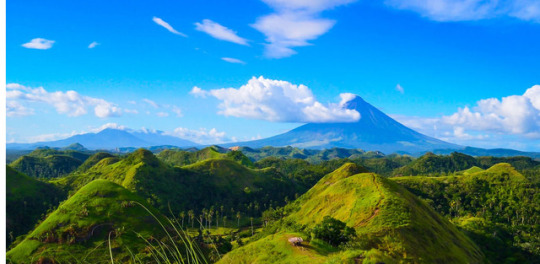
QUITINDAY HILLS
(Camalig, Albay, PH)
About an hour from Legazpi City, Albay’s provincial capital, lies the sleepy town of Camalig. Here, you’ll find one of the province’s hidden gems: Quitinday Hills, a 400-hectare sweep of verdant terrain that’s reminiscent of Bohol’s famed Chocolate Hills.
BACKGROUND and TRAIL
Standing at about 127m above sea level, the main hill can be easily surmounted with a 15-minute trek (even shorter if you’re hardcore!) along an established trail. The rutted path has a good sprinkling of craggy rocks and is secured by a length of bamboo fence. It also has a width of about one arm span, so visitors are advised to climb in single file. Overall, however, the trail’s subtle and steady incline makes it beginner- and kid-friendly.
Once you get to the top of the hill, you’ll have a choice of several viewing areas. One of these is a swath of even ground lying between two mounds, thereby affording visitors a different perspective of the hills. Here, you’ll find a nipa hut, where you can catch your breath while admiring the expanse of rolling hills and jagged peaks.
Alternatively, climb up onto one of the mounds, where you’ll be able to glimpse the looming form of Mount Mayon amidst the knolls. The view makes for a postcard-worthy photo on a clear day.
0 notes
Photo

CAGSAWA FESTIVAL

If you are looking for a festival with the perfect blend of cuisine, culture and adventure, then hie off to Cagsawa Festival in the Daraga, Albay which runs for the whole of February.
The fest was Crafted in 2012 by former Albay governor Joey Salceda to mark the 198th anniversary of the most destructive eruption of Mayon Volcano on Feb. 1, 1814, which killed over 1,200 persons in the Spanish-era town of Cagsawa.
The Cagsawa Ruins, where only the church belfry stands, is what remains of the Spanish-era town whose population relocated to higher and safer grounds in present-day Daraga.
Bicol region’s iconic image and top tourist attraction, it was declared by the National Museum in 2016 as a National Cultural Treasure (NCT), the country’s highest designation for a cultural property.
More than a memorial for the tragedy, the event puts to the fore Daraga’s history, heritage and everything in between in a month-long province-wide observance.

The festivity showcases a wide array of entertainment shows, musical tilts, sports tournaments, socio-civic activities, pageants, culinary activities, and special interest events.
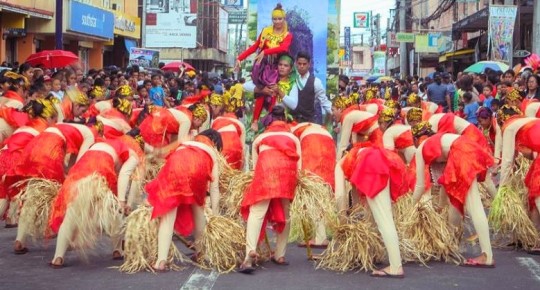
Now on its 6th year, the celebration’s locus is the cultural presentation and street dance competition set on Feb. 21 from contingents depicting events surrounding the 1814 eruption.

The town is at the core of Albay’s culinary tourism program with the presence of home-grown restaurants such as Balay Cena Una, Alvi’s Café, Balay Bicol, Casa Lorenzo Food and Culture, and First Colonial Grill.
The latter is home of the trademark Bicol dessert sili ice cream, a recipient of a Choose Philippines award as Best Panghimagas last year, where Mayon Volcano was also named as Best Mountains and Volcanoes.
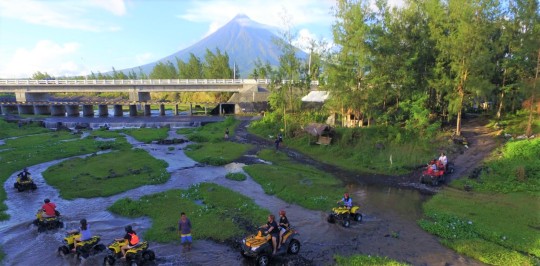
Two noteworthy extreme sports events in the Cagsawa Festival are the Endurocross and the Trail Run, a motorcycle race and half marathon, which cut through Mayon’s rugged and challenging lava trail where the old Cagsawa village used to stand.
Another exciting adventure around the area is driving the all-terrain vehicle (ATV) on the beaten path near the foot of Mayon.
For details of the Festival, refer to the calendar of activities below.

0 notes
Photo
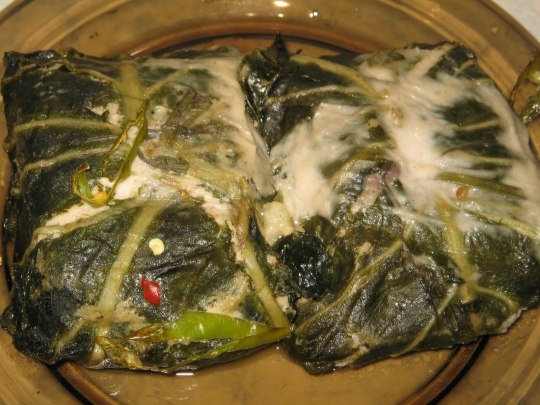
"Pull up a chair. Take a taste. Come join us. Life is so endless delicious.”---Ruth Reichl
Bicol is the home of spicy recipes cooked in coconut milk.Ear popping Bicol's recipes might be, they are still mouth watering and must-try delicacies.
Among the best of Bicol is the Pinangat. It is equally satisfying as the Bicol Express and Laing. This one is made of fish or shrimp wrapped in gabi or yam leves and cooked in, of course, coconut milk.
To try this dish, just do the following simple procedures:
Ingredients
• ½ kg freshwater shrimps (peeled and mixed with 1 ½ tbsp salt)
• 2 onions (chopped)
• 6 cloves garlic (chopped)
• 2 tbsp grated ginger
• 5 young coconut meat (grated)
• Few pieces of small chili pepper (siling labuyo)
• 20 to 25 fresh gabi leaves (whole leaf and no holes)
• 7 to 8 stalks of lemongrass (use the lower white portions only and smashed)
• Improvised strings made of banana stalks to tie each pinangat
• 3 to 4 cups thin coconut milk
• Mixed sauce as toppings:
• 3 to 5 spring onions (finely chopped)
• 5 cloves garlic (finely chopped)
• 4 shallots (finely chopped)
• 2 stalks lemongrass (use lower white portions only and smashed)
• 2 cups thick coconut cream
• salt to taste
Method
Step 1
Combine the freshwater shrimps and grated young coconut meat, onion, garlic, ginger and small chili peppers which can be optional. Chop them together using a cleaver knife or any large knife until the all ingredients are properly mixed.
Step 2
Wrap 2 to 3 tablespoons of the chopped mixture in 2 overlapping gabi leaves then tie each with the improvised strings made of banana stalks. The strings can be substituted with clean kitchen string.
Step 3
Use a heavy-bottom pot then evenly put the smashed lemon grass inside. Arrange pieces of wrapped mixture (Pinangat) on top of the smashed lemon grass and then pour the thin coconut milk over.
Step 4
Cover the pot, then simmer over low heat... shaking it once in a while to prevent burning.
Step 5
It's done when the gabi leaves are already soft or when all of the thin coconut milk has evaporated.
Step 6
While cooking the pinangat, boil together in a separate saucepan the thick coconut cream, shallots, garlic, and lemon grass. With constant stirring, season the mixture with salt and simmer until it resembles a thick creamy sauce. Sprinkle the spring onions on top and remove from the heat.
Step 7
Prepare to serve by arranging the pinangat in a wide platter topped with the creamy sauce.
0 notes
Photo

Ako Namoot Na
Puon kan kita nagkabistado sa eskwela,
Naging mag-amigo, pirming magkaiba;
Simpleng barkada lang an hiling ko saimo,
Tanu paghaloy ika naging gwapong soltero?
Ngunyan lugod namumrublema ako,
Garu namoot na an puso saimo;
Pirmi na lang ika nasa isip ko,
Hanggan sa pagturog inaapod pangaran mo.
Nagpadagos an aldaw, kita magkaibahan,
Nagsusurubahan asin nag-iisturyahan;
Gusto ko nang sabihon namamati ko,
Kaya lang tibad sabihong barkada lang ako.
Sarong aldaw iba an saimong kaiba,
Iba an hiling sa saimong mga mata;
Ako napaisip asin naghadit,
Na baka mawara ka sa sakuyang taid.
Mayo ka, ika an hanap kan mata,
Uya ika, pero nasa puso na kan iba;
Tanu an pagpadangat naging pasakit?
Garu man lang natakdag hale sa langit.
An pagpadangat yaon sana,
Dapat munahon an satuyang pag-eskwela;
Gabos na bagay may tamang panahon,
Iyo an satuyang pirming rumdumon.
0 notes